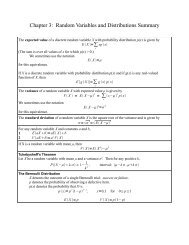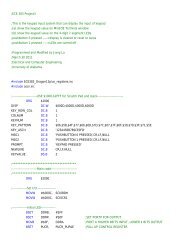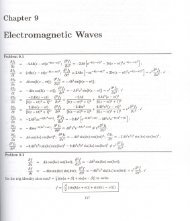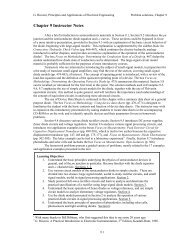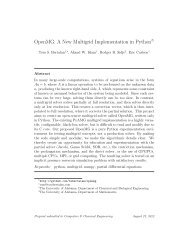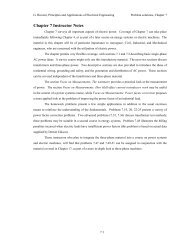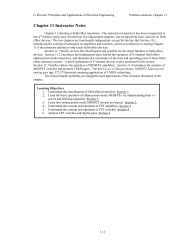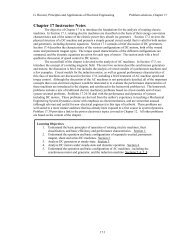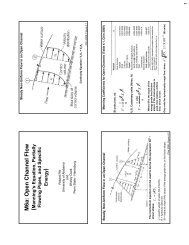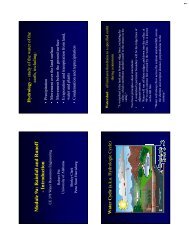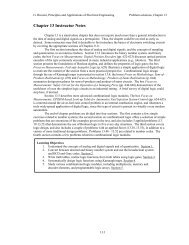ECE-320 CH02.pdf - Unix.eng.ua.edu
ECE-320 CH02.pdf - Unix.eng.ua.edu
ECE-320 CH02.pdf - Unix.eng.ua.edu
- No tags were found...
You also want an ePaper? Increase the reach of your titles
YUMPU automatically turns print PDFs into web optimized ePapers that Google loves.
G. Rizzoni, Principles and Applications of Electrical Engineering Problem solutions, Chapter 2Assumptions:Resistors are available in 18 - ¼- ½-, and 1-W ratings.Analysis:R 4300 2v out=V = 110⋅= 64.30 1 2160014300R + R + R + R + R1= 1. 45kΩV110VI === 15 maR0+ R1+ R21600 Ω + 1450 Ω + 4300 Ω21P0 = I R0= 360 mW PR= W0221P1 = I R1= 326.25 mW PR= W122P2 = I R2= 967.5mW PR 2= 1 W________________________________________________________________________Solution:Problem 2.23Known q<strong>ua</strong>ntities:Schematic of the circuit shown in Figure P2.23 with source voltage,R o= Ω,R 1= 10Ω,R = 2Ω.82Find:a) The equivalent resistance seen by the sourceb) The current ic) The power delivered by the sourced) The voltages v1and v2e) The minimum power rating required for R1Analysis:a) The equivalent resistance seen by the source isR eqb) Applying KVL:= R + R + = 8 + 10 + 2 = 20Ω0 1R2V 24VV − Req i = 0 , therefore i = = = 1.2A20ΩR eqv = 24V; and resistances,c)P source= Vi = 24 V ⋅1.2A= 28. 8Wd) Applying Ohm's law:e)v = R i = 10Ω ⋅1.2A12 V , and v = R i = 2Ω⋅1.2A2. 4 V1 1=2 2=2.18



